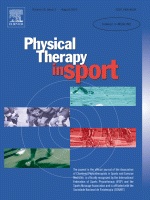
PHYSICAL THERAPY & REHAB
Effect of lace-up ankle braces on muscle activation in cases of chronic ankle instability
Phys Ther Sport. 2015 Feb;16(1):16-21.Fifteen recreationally active patients with chronic ankle instability underwent treadmill walking with and without the use of lace-up ankle braces. The purpose of this study was to determine if lower extremity surface electromyography (sEMG) timing and amplitude were affected by the use of lace-up ankle braces during treadmill walking. In this crossover design, all participants performed the walking trial with and without bracing. The results of this study indicated significantly lower signal amplitude of the peroneus longus prior to inital contact of the foot, delayed activation in the anterior tibialis, peroneus longus, rectus femoris and gluteus medius, and lower overall percent activation of the peroneus longus and rectus femoris muscles over the duration of the stride cycle.
Unlock the full ACE Report
You have access to {0} free articles per month.Click below to unlock and view this {1}
Unlock NowCritical appraisals of the latest, high-impact randomized controlled trials and systematic reviews in orthopaedics
Access to OrthoEvidence podcast content, including collaborations with the Journal of Bone and Joint Surgery, interviews with internationally recognized surgeons, and roundtable discussions on orthopaedic news and topics
Subscription to The Pulse, a twice-weekly evidence-based newsletter designed to help you make better clinical decisions
Exclusive access to original content articles, including in-house systematic reviews, and articles on health research methods and hot orthopaedic topics
Or upgrade today and gain access to all OrthoEvidence content for just $1.99 per week.
Already have an account? Log in


Subscribe to "The Pulse"
Evidence-Based Orthopaedics direct to your inbox.
{0} of {1} free articles
Become an OrthoEvidence Premium Member. Expand your perspective with high-quality evidence.
Upgrade Now












































































